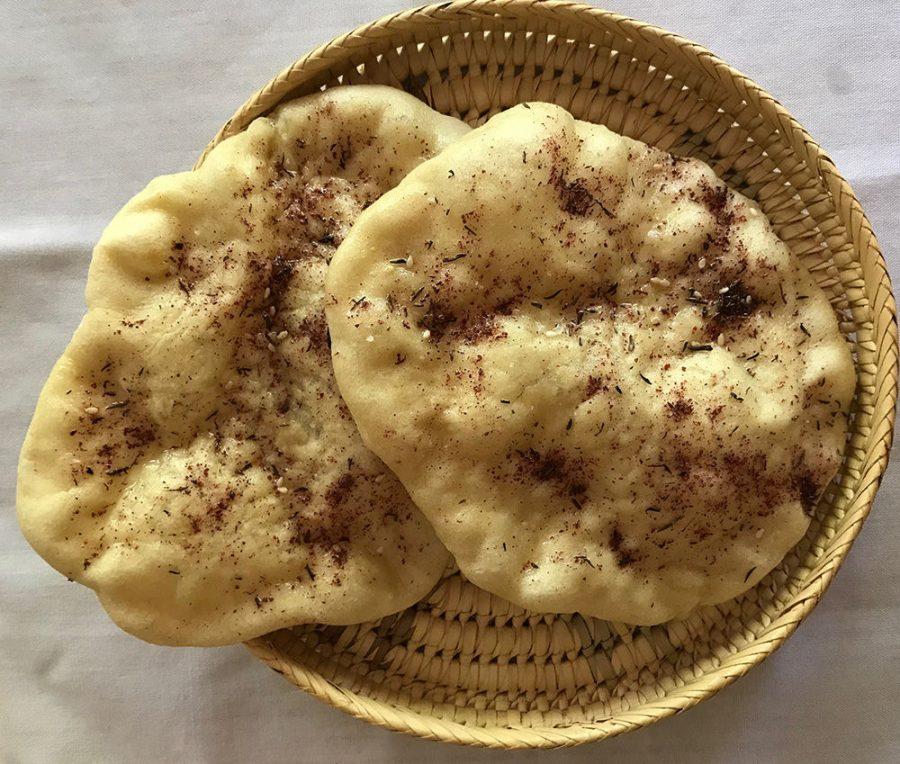Pita Bread…Perfect for Shavuot
Published May 17, 2018
Pita bread has become as common in the United States today as, well, sliced white bread. That wasn’t always the case. Growing up in the 1950s and 1960s, my generation had their sandwiches on Wonder bread, their lox and cream cheese on bagels, their corned beef on rye, their French toast from leftover challah, and, if you were really ahead of your time, butter and jam on a toasted English muffin. Unless you were a world traveler, you didn’t know from pita bread. Now we enjoy pita chips with hummus, pita pizzas, pita pockets filled with falafel, and just about everything pita else.
Like Indian Naan, Turkish Pide, and Sephardic Laffa, pita is a flatbread. Made primarily from flour, water and yeast just like the above breads, what sets pita apart from the others is its pocket.
Pita bread is baked at the highest oven temperatures. The combination of high heat and moist dough produces steam. And because the steam has nowhere to escape, it pushes the dough apart, creating the iconic pita pocket.
Originally baked in hot clay ovens thousands of years ago, pita was used as both a utensil to scoop up stews, vegetables and bean purees, as well as a vessel to hold food and give it portability. There are many Middle Eastern countries that lay claim to pita’s origins, as well as other places throughout North Africa and the Mediterranean.
While you can buy pita bread at nearly every supermarket in town, mass-produced pitas don’t begin to compare to the delectable version you can bake from scratch. Why? To begin with, you control the ingredients that go into your bread, i.e., no “dough conditioners,” preservatives or other ingredients you’ve never heard of. And even if you’ve never baked bread before, you can make pita. I promise.
If you’ve got a yeast phobia, I assure you that you are not alone. But the good news is that pita bread is an easy yeast dough to handle. Once you have conquered pita, you’ll be ready to start baking more elaborate breads.
For a truly Zen-like experience, mix the dough by hand in a bowl with a wooden spoon and knead it on your kitchen counter the same as you would a piece of Play-Doh. Or if you’d rather, you can make the dough in a food processor or a stand mixer. While the machine method may be a bit faster, as a passionate bread baker I will tell you that there is nothing quite like coaxing a dough into the soft pillowy mass it becomes after mixing and kneading it by hand. I guarantee that hand kneading is fun, therapeutic and even builds upper body muscle.
The experience of making bread from scratch is magical. From a handful of simple ingredients—flour, water, yeast, and salt—comes a delicious and nutritious bread that will not only have your friends and family begging for more but will fill your house with intoxicating aromas.
So what’s so special about pita bread? To begin with, pita is unique in the realm of bread. Unlike most other breads, pitas can be eaten within 10 minutes of coming out of the oven whereas other breads must be cooled for at least 30 minutes before you can safely slice them. Moreover, the options for using pitas, as opposed to regular bread slices, are nearly endless. Of course, you can stuff pitas with falafel balls, hummus, tahini sauce, and pickles… yum! But that’s just the beginning.
With Shavuot just around the corner, and the tradition of making your holiday meal a dairy one, pita bread can be an ideal part of that festive meal. Serve it alongside savory baked pasta or kugel just as you would any fresh bread. Or feature your pitas stuffed with a delicious roasted or grilled Spanish escalivada, a vegetable blend that epitomizes the essence of market-to-table flavor. Simply spoon the mixture it into your fresh pitas and accompany them with a light vegetarian grain salad.
A pita pocket can also be the perfect vessel for any salad of lettuce greens or mixed vegetables, or any number of grain salads, from traditional tabbouleh made with cracked wheat to cooked faro or barley mixed with arugula or spinach and tossed with a tasty balsamic vinaigrette. You could also fill your pitas with scrambled eggs, goat cheese, and fresh chives or scallions for an exciting breakfast option. For a fun dinner, fill fresh pita breads with mini meatballs, a dollop or two of marinara sauce or tahini sauce, and some shredded lettuce. Think of it as a meatball sub in a pita. Now imagine doing that on sliced bread!
I share below my recipes for easy-to-make pita bread, delicious dipping oil, the escalivada I mentioned above, and spicy pita chips.
Chag Samaech!















